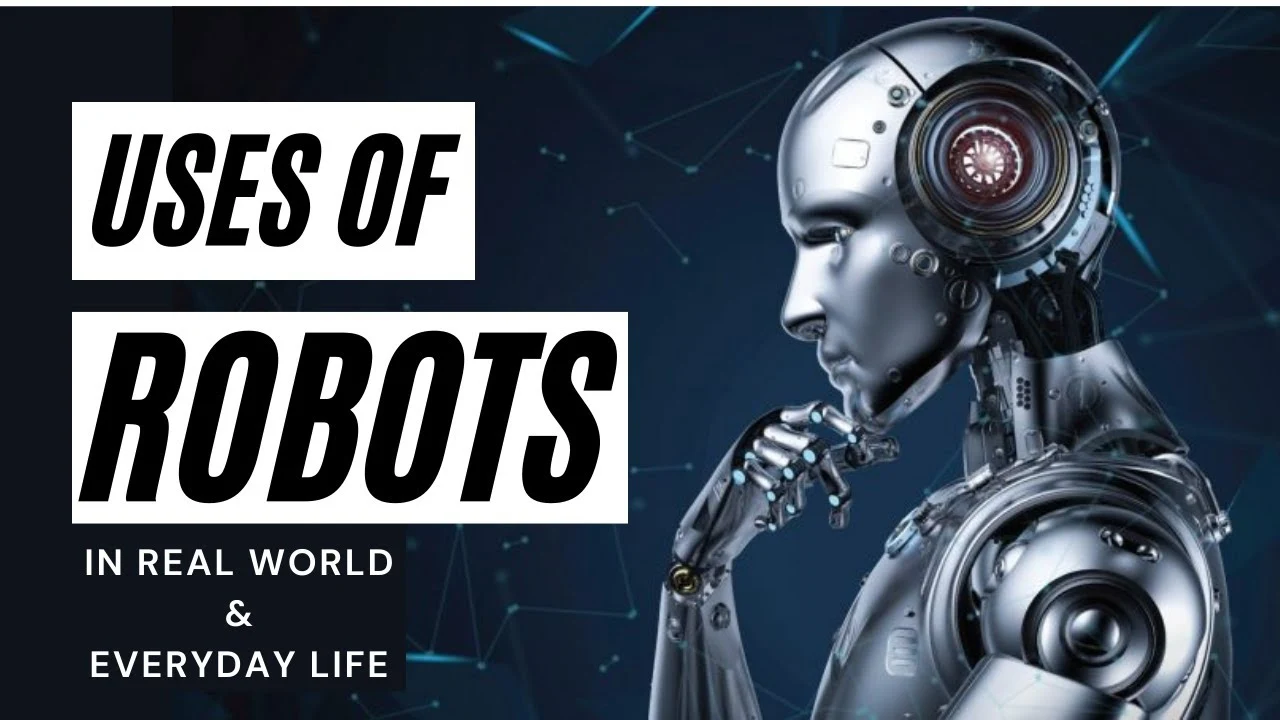Robotics in Daily Life: 11 Incredible Everyday Uses
Discover how robotics in daily life is transforming homes, healthcare, education, and work. Learn benefits, real examples, and future trends.
A few decades ago, the idea of having robots in our homes sounded like something out of a science fiction movie. Today, that fiction has become reality. From smart vacuum cleaners quietly sweeping our floors to robotic assistants helping doctors in surgeries, robotics has found its way into our everyday routines.
The role of robotics is no longer limited to factories or research labs. Instead, it has reached households, hospitals, classrooms, and even entertainment spaces. People rely on robots to save time, reduce effort, and bring more efficiency into their lives.
Robotics in Daily Life. As technology continues to grow at lightning speed, robotics has become one of the most influential innovations of the 21st century. These machines are not only making life easier but also changing the way humans interact with the world. The question is no longer whether robots will be part of our future, but how deeply they will be integrated into our daily lives.
What is Robotics?
Robotics in Daily Life is a field of science and engineering that focuses on designing, building, and using robots to perform tasks. A robot can be a simple machine following programmed instructions or a highly advanced system powered by artificial intelligence. The primary goal is to make life easier by automating repetitive, risky, or time-consuming activities.
While Robotics in Daily Life feels modern, the concept actually dates back centuries. Ancient inventors created mechanical devices to mimic human actions, planting the seeds of today’s innovations. Over time, engineering and computer science advanced these ideas into the smart robots we see today.
In the modern world, robotics blends hardware, software, and AI to create machines capable of adapting and learning. Whether it’s a factory robot building cars, a robot vacuum cleaning floors, or a healthcare robot assisting patients, robotics has become a partner in human progress.
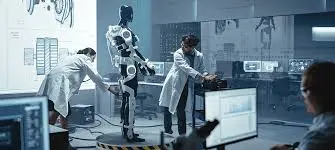
History of Robotics in Daily Life Uses
The idea of automated machines goes back thousands of years. Ancient civilizations experimented with mechanical devices for entertainment and practical use. Hero of Alexandria, for example, designed early automated systems using air and water pressure.
Robotics in Daily Life. Fast forward to the Industrial Revolution, and machines started to play a larger role in daily life. Factories introduced mechanical systems to speed up production and reduce reliance on manual labor. In the 20th century, industrial robots transformed industries by assembling products with accuracy and consistency. By the late 1900s, robotics began entering homes through simple devices like washing machines and automated toys. With time, robotics advanced further, giving rise to smart household gadgets, paving the way for the convenience we enjoy today.
How Robotics Entered Our Homes
The first wave of home Robotics in Daily Life came in the form of everyday appliances. Dishwashers, washing machines, and microwaves weren’t called robots, but they automated household tasks. They were the earliest proof that machines could become reliable helpers.
As technology grew, robotics took a leap into smarter systems. Robotic vacuum cleaners like the Roomba became widely popular, taking over the time-consuming chore of cleaning floors. Later, robotic lawn mowers and kitchen devices appeared, showing how automation could save time and effort.
Today, Robotics in Daily Life has become a part of modern smart homes. From AI voice assistants like Alexa and Google Home to robotic pets that provide companionship, robotics has moved beyond chores—it is shaping how we live, connect, and interact at home.
Robotics in Daily Life: Key Applications
Household Robots
Robotics in Daily Life. Household robots are some of the most visible examples of robotics in action. Cleaning robots, such as robotic vacuums and floor mopping devices, have become everyday essentials for busy families. They quietly do the work while people focus on other priorities.
In kitchens, robotic systems make cooking easier. From smart coffee makers to ovens that adjust settings automatically, these devices add convenience to mealtime. They help save hours while ensuring delicious results.
Even outdoor tasks are getting automated. Robotic lawn mowers trim grass without supervision, while pet care robots feed and play with pets. This shows how robotics is transforming home life into something more efficient and stress-free.
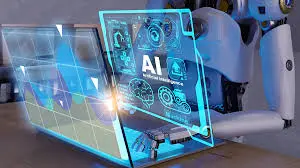
Healthcare & Medical Robots
The healthcare sector has experienced a revolution thanks to Robotics in Daily Life. Robotic surgical systems help doctors perform complex operations with unmatched precision, reducing risks and recovery times for patients. These machines assist rather than replace doctors, making healthcare safer.
Nursing robots provide support to elderly and disabled individuals. They can remind patients to take medicines, help them move around, and even offer companionship. In societies with aging populations, such robots are becoming a valuable resource.
Hospitals also use delivery robots to transport medical supplies, documents, and meals. By automating these tasks, healthcare workers can devote more time to patient care. This balance of efficiency and compassion is a powerful example of Robotics in Daily Life action.
Education & Learning
Robotics in Daily Life is making classrooms more interactive and fun. Educational robots allow students to experiment with coding, science, and engineering in a hands-on way. This sparks curiosity and builds problem-solving skills from an early age.
During remote learning, robots act as virtual companions or assistants. They connect students with teachers and peers, making online education less isolating and more engaging. Robotics ensures that learning continues even outside traditional classrooms. For students with special needs, robotics has opened new doors. Robots can help children with autism improve communication skills or provide personalized learning support. This makes education more inclusive and accessible.
Transportation & Self-Driving Cars
Transportation is one of the most exciting areas where robotics is making an impact. Self-driving cars are being developed to reduce road accidents and improve traffic flow. Companies like Tesla and Google are leading the race to bring these cars into everyday use.
Robotics in Daily Life. Public transportation has also adopted automation. Many modern trains and subways run with robotic systems that ensure safety and efficiency. This helps cities manage transportation for millions of passengers daily. Delivery drones and robots are reshaping logistics by delivering groceries, medicines, and parcels directly to customers’ doors. These innovations save time, cut costs, and bring a futuristic touch to everyday convenience.
Shopping & Customer Service
Robotics in Daily Life is changing the way people shop. In many stores, robotic assistants welcome customers, guide them to products, and answer questions. They make the shopping experience smoother and more enjoyable.
Self-checkout systems powered by AI and robotics are now common in supermarkets. Customers can scan, bag, and pay for items without waiting in long lines. This innovation speeds up shopping and reduces operational costs.
Behind the scenes, warehouse robots manage inventory, pack goods, and handle shipments. Amazon’s warehouse automation is a prime example, showing how robotics boosts efficiency in large-scale shopping operations.
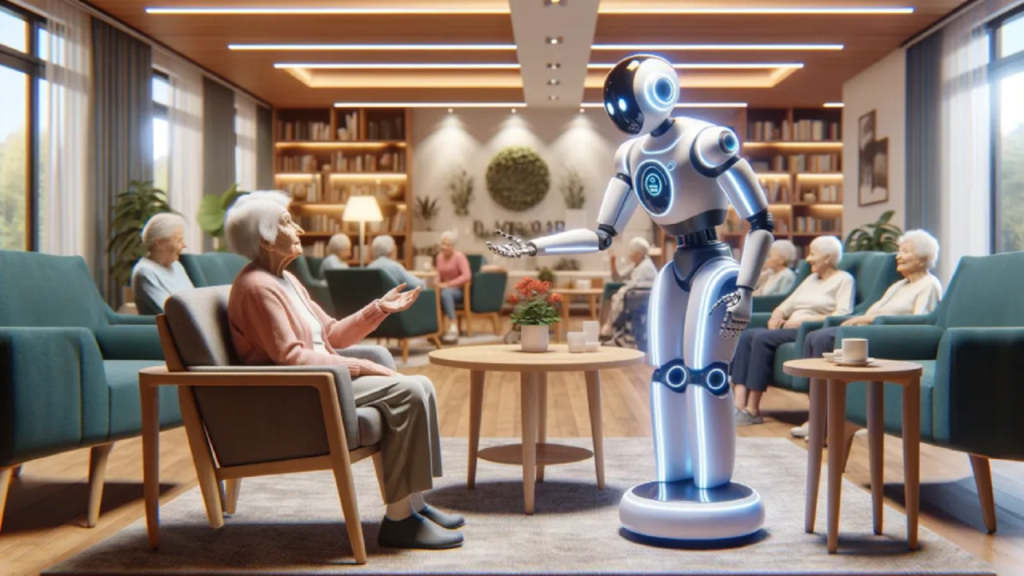
Entertainment & Gaming
Entertainment has also embraced robotics in fascinating ways. Robotic toys, for example, entertain children while also teaching basic skills. They can respond to commands, sing, or even dance, keeping kids engaged for hours.
In gaming, robotics adds immersive experiences. Motion-sensing devices and robotic interfaces allow players to interact with games in lifelike ways. Virtual reality combined with robotics is redefining modern gaming. Even the performing arts use robots. Theme parks, concerts, and stage shows often include robotic performers with realistic movements. These machines blend art and technology, creating unforgettable entertainment experiences.
Workplace Automation
Workplaces around the world are evolving with robotics. Office robots help manage schedules, answer customer inquiries, and handle repetitive tasks like data entry. This allows employees to focus on more creative and meaningful work.
Industrial robots dominate manufacturing plants. They assemble cars, electronics, and consumer goods with speed and accuracy that humans alone cannot achieve. This ensures consistent quality while reducing production costs.
Agriculture is another field benefiting from robotics. Robots can plant seeds, water crops, and even harvest produce. Farmers save labor costs while improving productivity and ensuring food security.
Benefits of Robotics in Daily Life
The most obvious benefit of robotics is time-saving convenience. From cleaning homes to delivering packages, robots take on tasks that consume valuable hours, freeing people to focus on family, work, or hobbies.
Robots also bring precision and safety to everyday tasks. In healthcare, they reduce the risk of errors during surgery. In factories, they handle dangerous jobs, protecting workers from harm.
Finally, robotics ensures efficiency and consistency. Unlike humans, robots don’t tire or lose focus. They deliver reliable results, whether it’s in classrooms, hospitals, or workplaces. This makes life smoother and more predictable.
Challenges & Concerns
Despite their benefits, Robotics in Daily Life also raises challenges. One major issue is cost—advanced robots can be too expensive for average households. This creates a gap between those who can access them and those who cannot.
Another concern is job displacement. Robots are taking over repetitive tasks, leading to fears of unemployment. While robotics creates new opportunities in technology fields, the transition can be difficult for many workers. There are also privacy and ethical issues. Robots equipped with cameras and AI often collect personal data. Without proper regulations, this could lead to privacy violations or misuse of information.
Future of Robotics in Daily Life
The future of robotics Robotics in Daily Life looks promising and exciting. With advancements in AI, robots will become more intelligent, capable of understanding emotions, language, and human behavior. They will be able to provide personalized assistance in ways we cannot yet imagine.
In the coming years, humanoid robots may enter households as full-time helpers. They could handle cooking, cleaning, childcare, and even companionship. This will be especially valuable for the elderly and those living alone.
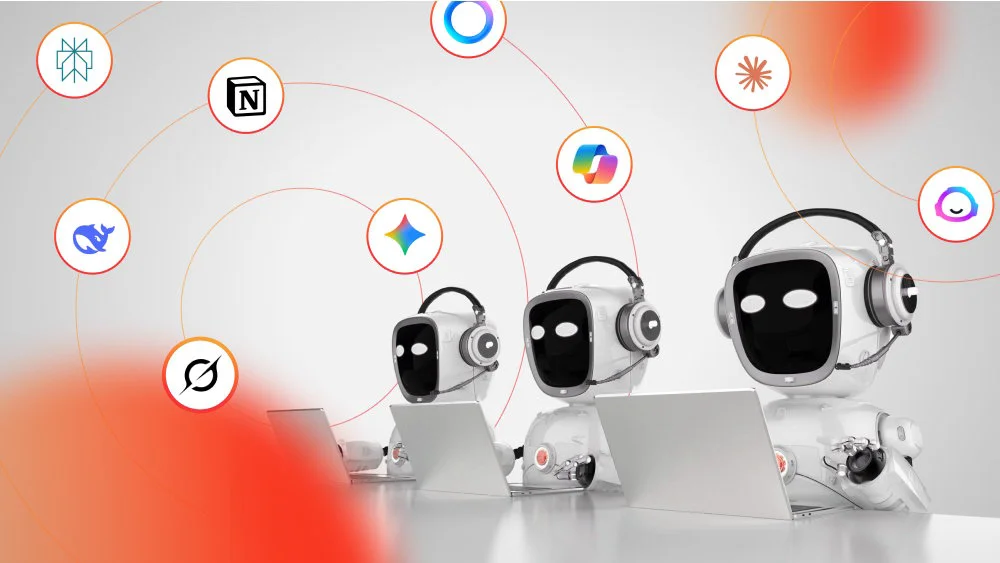
Smart cities will also rely on robotics for managing traffic, waste, and energy. The integration of Robotics in Daily Life into urban life will create safer, cleaner, and more efficient communities.
Case Studies & Real-Life Examples
One well-known household example is the iRobot Roomba, which automatically cleans floors and avoids obstacles. It has become a symbol of practical robotics in modern homes.
In healthcare, the Da Vinci Surgical System is transforming surgeries with robotic precision. It allows doctors to perform minimally invasive operations with better accuracy and faster recovery for patients.
Another groundbreaking example is Boston Dynamics, famous for robots like Spot the robotic dog. These robots can walk, run, and carry out complex tasks, showcasing how advanced robotics has become.
How Robotics is Changing Human Lifestyle
Robotics is making life more balanced by automating chores. Families spend less time on cleaning and more on bonding, hobbies, or work. This shift is creating healthier and happier lifestyles.
In healthcare, robots are improving the quality of life. Patients receive better care, while elderly people enjoy independence with the help of robotic assistants. This shows how robotics contributes to human well-being.
On a broader level, robotics is reshaping societies. From education to entertainment, people are experiencing new ways of living and learning. Robotics is no longer just a tool—it’s becoming a lifestyle partner.
FAQs
Q1: What are some examples of robotics in daily life?
Robots are used in homes for cleaning and cooking, in hospitals for surgeries, in schools for learning, and in workplaces for manufacturing and customer service.
Q2: Why are robotics important in daily life?
Robotics are important because they save time, increase safety, and improve accuracy. They help humans focus on creativity and decision-making instead of repetitive tasks.
Q3: How do robots affect jobs?
Robots replace certain repetitive jobs but also create new roles in robotics engineering, programming, and AI development. The workforce is shifting rather than disappearing.
Q4: What is the role of robotics in education?
In education, robots make learning more interactive. They help teach coding, problem-solving, and even assist students with special needs by providing personalized support.
Q5: How do robots help in healthcare?
Healthcare robots assist in surgeries, deliver medical supplies, and provide support to elderly or disabled patients. They improve efficiency and reduce human error.
Q6: Will robots be common in every home in the future?
Yes, with AI advancements and lower costs, robots are expected to become as common as smartphones, assisting families with chores, security, and daily routines.
Q7: Are robots safe to use daily?
Most robots are designed with safety in mind. However, ethical concerns like privacy, data collection, and dependency need to be carefully managed.
Q8: How will robotics shape the future of cities?
Future smart cities will use robotics for traffic management, waste collection, and public safety. This will create more efficient, sustainable, and connected urban living.
Conclusion
Robotics in daily life is no longer a futuristic vision—it’s a present reality. From homes and hospitals to schools and offices, robots are transforming everyday experiences. They save time, increase safety, and bring efficiency into countless aspects of life.
Yes, challenges like cost, job concerns, and privacy issues remain, but the advantages are undeniable. Robotics is not here to replace humans but to work alongside them, making life better and more productive.
Robotics in Daily life as technology evolves, the partnership between humans and robots will only grow stronger. The future will not be about humans versus machines but about humans and machines working together to shape a smarter, safer, and more connected world.

